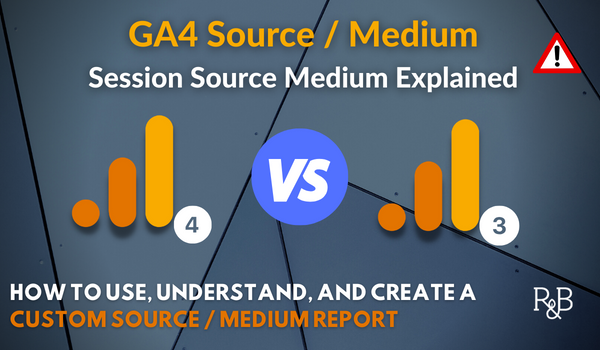Introducing the Influence of Additional Dimension in Google Analytics on Information Evaluation and Insights
In the realm of information analytics, the usage of additional dimensions within Google Analytics has emerged as a critical tool for removing deeper understandings and unraveling complicated patterns that could otherwise stay covered. By peeling off back the layers of primary information sets, additional dimensions supply a nuanced point of view that improves the understanding of individual actions, site performance, and the efficiency of advertising and marketing methods. The real impact and untapped capacity of second measurements are usually undervalued, outweighed by the appeal of primary metrics. As we browse via the intricate landscape of information evaluation, the significance of additional dimensions comes to be increasingly apparent, clarifying important information that hold the secret to informed decision-making and tactical optimizations.
Checking Out the Idea of Second Measurements
Additional measurements in Google Analytics supply extra insights by permitting individuals to evaluate main data in conjunction with a second characteristic. By integrating second measurements, customers can dive much deeper into the information and uncover important relationships that may otherwise go unnoticed - what is a secondary dimension in google analytics.
Comprehending the concept of second measurements is vital for maximizing the possibility of Google Analytics. It enables customers to sector data efficiently, determine patterns, and make educated choices based on an extra total picture of their analytics information. By exploring the various secondary measurements available in Google Analytics, customers can open brand-new insights and maximize their electronic marketing initiatives. Fundamentally, additional dimensions act as a powerful tool for improving information evaluation and driving actionable outcomes.
Enhancing Information Interpretation With Second Measurements
Having established the foundational understanding of second dimensions in Google Analytics and their crucial duty in data analysis, the emphasis currently changes towards leveraging these secondary features to improve the interpretation of analytics information (what is a secondary dimension in google analytics). By integrating secondary dimensions right into data analysis, analysts can get deeper understandings into individual habits, internet site performance, and advertising and marketing performance

Furthermore, secondary measurements help in contextualizing primary information metrics by offering extra layers of details. This contextualization aids in comprehending the 'why' behind the information fads, aiding experts make notified optimizations and choices to improve overall performance. Inevitably, including additional measurements enhances the data interpretation procedure, resulting in more purposeful insights and strategic activities.
Revealing Hidden Insights With Secondary Measurements
Discovering the midsts of analytics information with additional dimensions discloses important insights that would certainly otherwise stay covered. By including secondary measurements in Google Analytics, services can uncover concealed patterns, patterns, and relationships that provide an even more extensive understanding of customer behavior and internet site performance. These added layers of information permit experts to dive deeper into the primary measurements, such as website traffic sources or touchdown web pages, and get an extra nuanced point of view on how different variables communicate with each other.
With making use of additional measurements, analysts can section and contrast information across various measurements, enabling them to recognize specific factors that affect individual interaction, conversion rates, and total success metrics. By coupling the main measurement of 'tool classification' with the additional measurement of 'age group,' online marketers can pinpoint which age demographics choose accessing the internet site with mobile gadgets versus desktop computers. This degree of granularity encourages services to make data-driven decisions and maximize their strategies for far better results. Eventually, revealing hidden understandings with secondary dimensions boosts the deepness and precision of information evaluation, causing more enlightened decision-making and enhanced performance results.
Leveraging Secondary Measurements for Actionable Analytics
Building upon the understandings revealed through additional dimensions in Google Analytics, services can now harness this enriched information landscape to drive actionable analytics and tactical decision-making. By leveraging secondary dimensions, organizations can dig deeper into their information to remove important patterns, fads, and relationships that may have previously gone undetected. This much deeper level of evaluation enables businesses to acquire a much more thorough understanding of user actions, campaign efficiency, and overall web site efficiency.
One trick benefit of making use of secondary dimensions for workable analytics is the capacity to section data based upon details standards. This division allows companies to customize their campaigns and methods to various target market teams, resulting in more targeted and effective advertising and marketing initiatives - what is a secondary dimension in google analytics. In addition, additional measurements provide an even more all natural get redirected here view of individual communications, allowing services to maximize their internet site content, layout, and total user experience
Making Best Use Of Decision-Making With Second Dimensions
To improve calculated decision-making in analytics, leveraging additional dimensions in Google Analytics can provide an extra nuanced viewpoint on customer habits and project efficiency. By integrating additional measurements into data evaluation, companies can delve much deeper these details right into the specifics of their web site visitors' communications and involvement patterns. This extra layer of info permits an extra extensive understanding of just how different variables, such as demographics, tools, or traffic sources, impact vital efficiency indications.

Final Thought
In conclusion, using additional measurements in Google Analytics plays a critical role in boosting information evaluation and discovering covert insights. By discovering this principle, one can get a much deeper understanding of user actions and make educated choices based on workable analytics. Leveraging secondary measurements permits a more thorough analysis of data and takes full advantage of the efficiency of decision-making procedures.
 website link a secondary dimension in google analytics
website link a secondary dimension in google analytics"/>